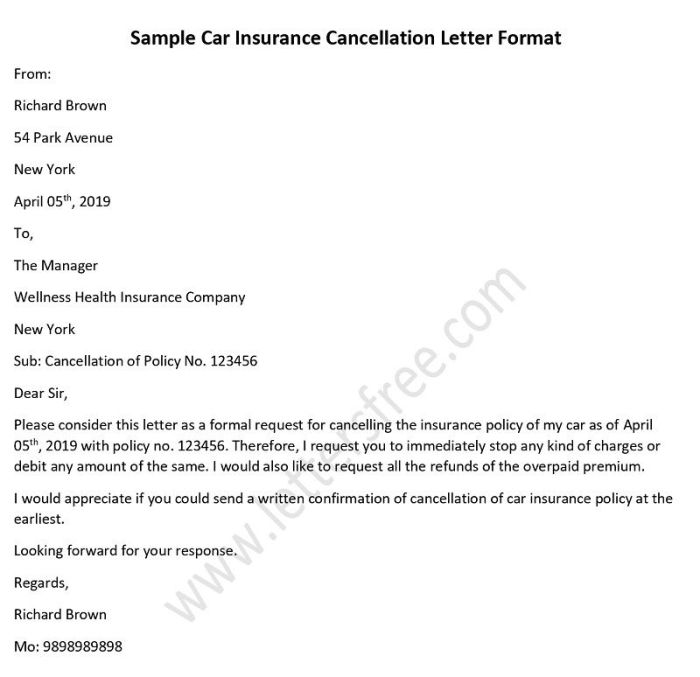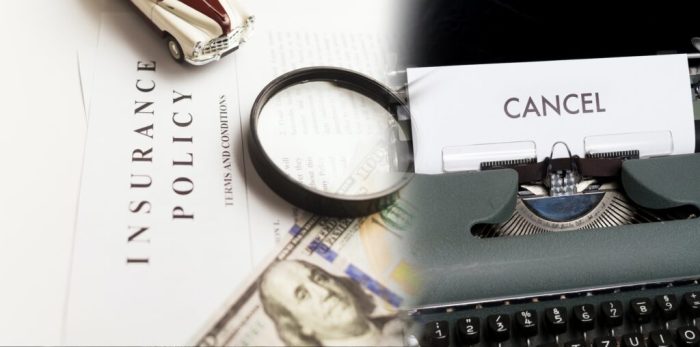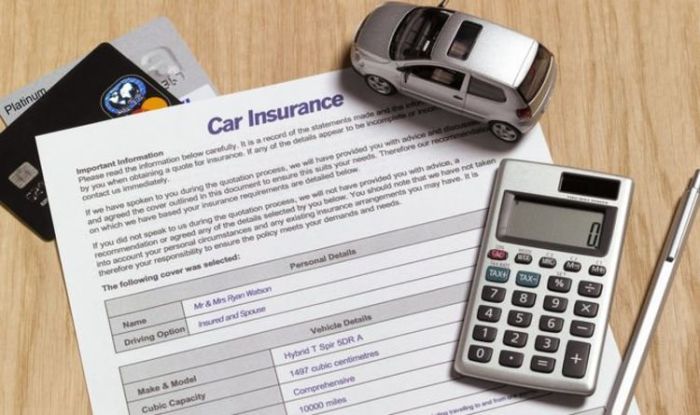How do I cancel my car insurance policy? It’s a question many of us have pondered at some point, whether it’s due to a new car, a change in driving habits, or simply a desire to switch providers. Navigating the world of insurance cancellation can feel like a maze, but it doesn’t have to be.
This guide will walk you through the process, from understanding your policy to ensuring you’ve taken all the necessary steps for a smooth transition.
Before you even think about cancelling, it’s essential to thoroughly understand the terms of your current policy. Look for details on cancellation fees, grace periods, and any refund policies that might apply. Your policy document is your roadmap for understanding the cancellation process, so take the time to review it carefully.
Understanding Your Policy

Before you can cancel your car insurance policy, it’s crucial to understand the specifics of your coverage. Your policy details how and when you can cancel, including any fees or potential refunds.
Policy Types and Cancellation Procedures
Different types of car insurance policies have varying cancellation procedures.
- Standard Car Insurance Policies:These policies generally allow you to cancel at any time with a written notice to your insurance company. You may be subject to a cancellation fee and may not receive a full refund of your premium.
- Pay-As-You-Go Policies:These policies are often associated with telematics devices that track your driving habits. They allow for more flexibility, and you may be able to cancel your policy without a fee if you haven’t used it for a certain period.
- Short-Term Car Insurance Policies:These policies are designed for temporary coverage, like when you’re borrowing a car for a short trip. They typically have a fixed term and can be canceled without penalty before the term ends.
Cancellation Fees and Grace Periods
Your policy will Artikel any applicable cancellation fees and grace periods.
- Cancellation Fees:These fees are typically charged when you cancel your policy before the end of your coverage term. The fee amount varies depending on your insurance company and policy.
- Grace Periods:This is a period of time after your premium payment is due when you can still make the payment without incurring a late fee or penalty.
Refund Policies
Your policy will specify how refunds are handled if you cancel your coverage.
- Pro-Rata Refunds:This means you’ll receive a refund for the unused portion of your premium. This is typically the case when you cancel your policy mid-term.
- Short-Rate Refunds:This means you’ll receive a smaller refund than a pro-rata refund, as your insurance company will deduct a portion of your premium to cover administrative costs.
Reviewing Your Policy Documents
Carefully reviewing your policy documents is essential to understand the specific cancellation process for your policy. This includes:
- Cancellation Procedures:The steps you need to take to cancel your policy, including the required notice period and methods of cancellation (e.g., written notice, online portal).
- Cancellation Fees:The amount of any applicable cancellation fees.
- Refund Policies:The method used to calculate refunds and the amount you can expect to receive.
Cancellation Fees and Refunds
You might be surprised to learn that canceling your car insurance policy can sometimes come with a cost. Insurance companies often charge cancellation fees, and the amount you receive back as a refund can vary depending on the situation.
Cancellation Fees
Cancellation fees are charges that insurance companies impose when you terminate your policy before its natural expiration date. These fees help offset the administrative costs associated with processing the cancellation and can also help protect the company from losing money if you cancel your policy right before a claim is filed.
- Short-Term Policies:For policies with a duration of less than six months, the cancellation fee might be a flat amount or a percentage of your premium.
- Long-Term Policies:For policies lasting longer than six months, the cancellation fee may be calculated as a percentage of the remaining premium. The exact percentage can vary by company and state.
Refunds
When you cancel your car insurance policy, you’ll typically receive a refund for the unused portion of your premium. The refund amount can vary depending on your policy type, the reason for cancellation, and the state you live in.
- Pro-Rated Refunds:This is the most common type of refund. It’s calculated based on the number of days remaining on your policy. For example, if you cancel your policy after 6 months, you’ll receive a refund for the remaining 6 months of coverage.
- Full Refunds:In some cases, you might be eligible for a full refund, especially if you cancel your policy within a specific timeframe, such as within 30 days of purchase.
Examples
- Example 1:Let’s say you have a six-month car insurance policy and cancel it after two months. You paid $600 for the policy. Since you’ve used two months of coverage, you’ll receive a pro-rated refund for the remaining four months. This refund would be calculated as (4/6) – $600 = $400.
However, if your insurance company charges a cancellation fee of $50, your final refund would be $350.
- Example 2:You might receive a full refund if you cancel your policy within the first 30 days of purchase, assuming there have been no claims filed. This is often called a “free look” period. However, you’ll still need to check your policy documents and state regulations for specific details.
Alternatives to Cancellation

Sometimes, cancelling your car insurance policy might not be the best option. You might be able to adjust your policy to better fit your needs and save money. Here are a few alternatives to consider:
Adjusting Your Coverage
You can reduce your premiums by lowering your coverage. For example, you can lower your collision and comprehensive coverage if your car is older or if you have a lower deductible. You can also reduce your liability coverage if you have few assets.
However, lowering your coverage can leave you with less protection in the event of an accident. It’s important to weigh the potential savings against the risk of being underinsured.
Changing the Policy Term
If you’re only temporarily without a car, you can suspend your policy for a short period. This will save you money on premiums while you’re not using the car. However, it’s important to note that if you need to reinstate your policy, you may have to pay a higher premium than before.
Suspending the Policy
If you’re planning on being without a car for an extended period, you can suspend your policy. This will stop your premiums from accumulating. However, you will need to reinstate your policy when you get a new car. This may result in a higher premium than before.
Maintaining Proof of Cancellation

It’s super important to keep track of everything related to your car insurance cancellation. Think of it as your proof that you’re officially out of the policy. This documentation can be a lifesaver if there are any disputes or if you need to make a claim later on.
Cancellation Documentation
Keeping records of the cancellation process is crucial to ensure a smooth transition and protect your interests. Here’s what you should keep:
- Confirmation Emails:Save all emails from your insurance company confirming your cancellation request and any follow-up communication.
- Cancellation Forms:Keep a copy of any forms you submitted to cancel your policy, including the date you signed it.
- Cancellation Letters:If you sent a cancellation letter, retain a copy for your records.
Examples of How Cancellation Records Are Useful, How do I cancel my car insurance policy?
- Disputes:If there’s a dispute about the cancellation date or whether the policy was properly terminated, your documentation will serve as proof.
- Future Claims:If you need to make a claim after your policy has been canceled, the records can help prove you were insured at the time of the incident.
Template for Documenting Cancellation
Here’s a template you can use to organize your cancellation records:
| Date | Action | Description | Document |
|---|---|---|---|
| [Date of Cancellation Request] | Cancellation Request Submitted | Sent email/letter/form to [Insurance Company] requesting cancellation of policy [Policy Number]. | [Attach copy of email/letter/form] |
| [Date of Confirmation] | Cancellation Confirmed | Received confirmation email/letter from [Insurance Company] confirming cancellation of policy [Policy Number]. | [Attach copy of email/letter] |
Epilogue

Canceling your car insurance doesn’t have to be a stressful ordeal. By understanding your policy, contacting your provider, and following the correct steps, you can navigate the process efficiently and confidently. Remember, maintaining proof of cancellation is crucial for peace of mind, so keep all your records organized.
Whether you’re switching to a new provider, selling your car, or simply no longer need coverage, armed with this information, you’ll be ready to handle the process with ease.
Q&A: How Do I Cancel My Car Insurance Policy?
What if I’m still making payments on my car?
If you’re still making payments on your car, cancelling your insurance may affect your loan. Contact your lender to understand the implications and see if they have any specific requirements.
What if I have a claim pending?
You generally can’t cancel your policy while a claim is pending. You’ll need to wait until the claim is resolved before you can cancel.
Can I cancel my policy early and get a refund?
You may be able to get a prorated refund if you cancel your policy early. However, check your policy for any cancellation fees that might apply.
What if I need to cancel my policy due to a move?
Many insurance companies have specific procedures for cancelling policies due to relocation. Contact your provider for their specific requirements and procedures.
